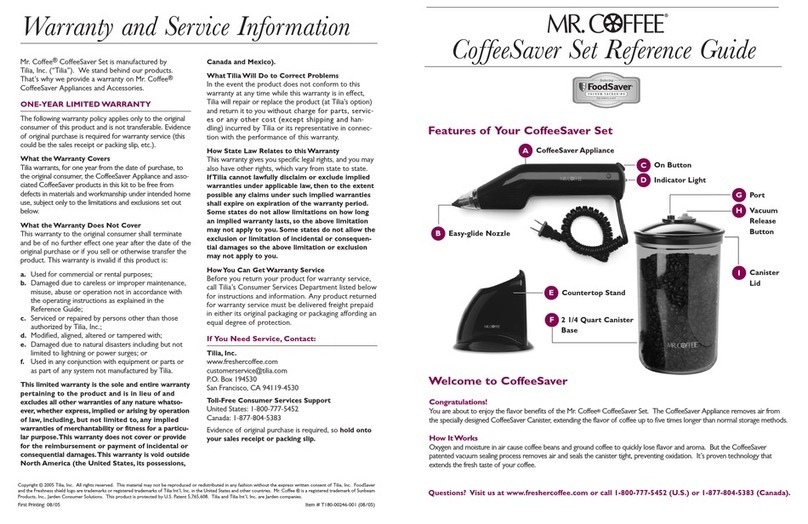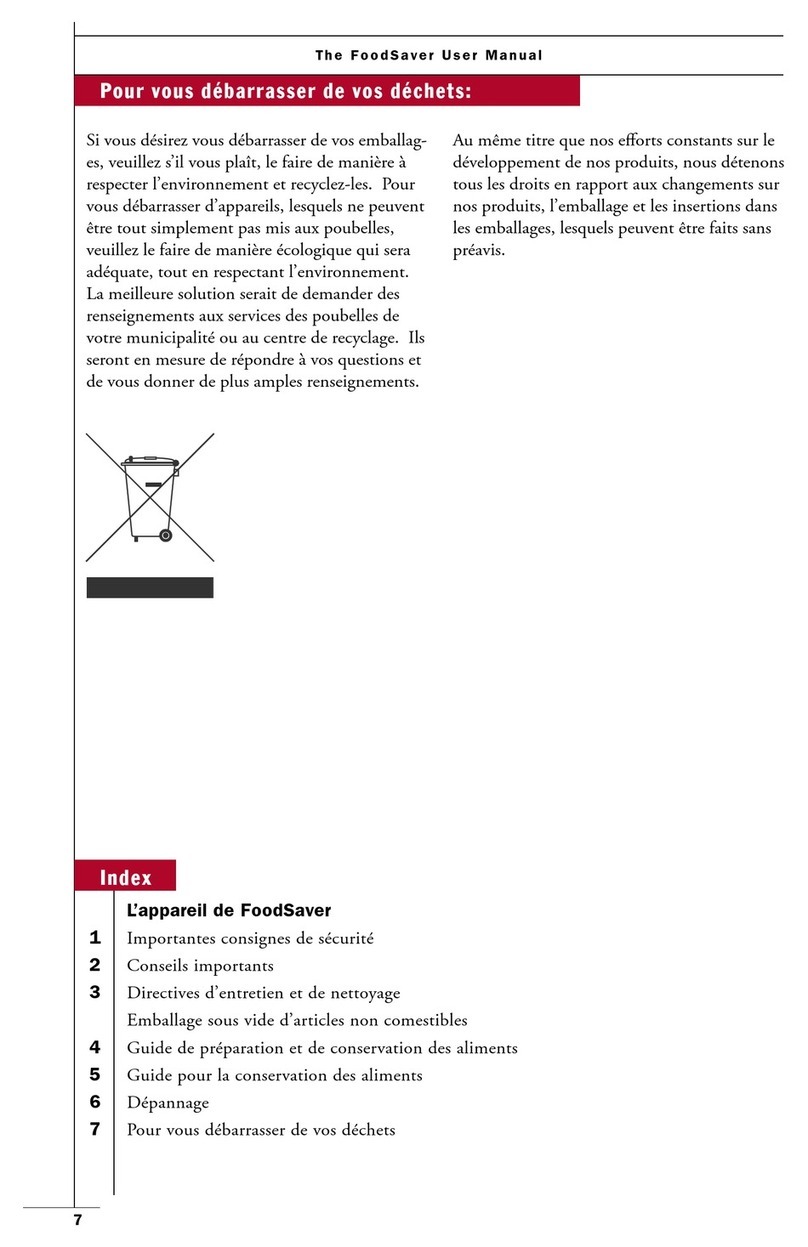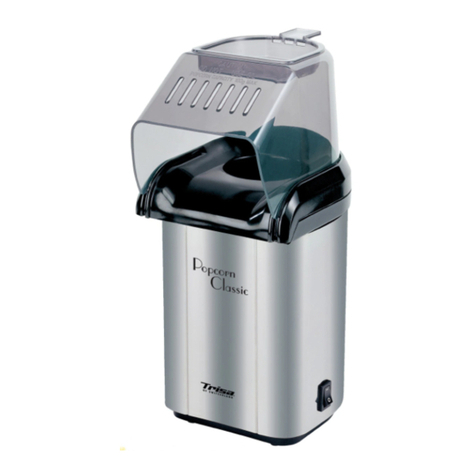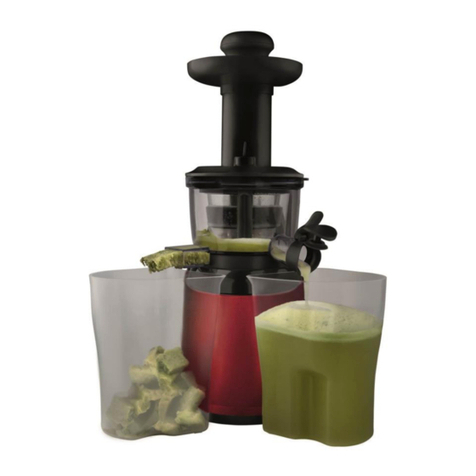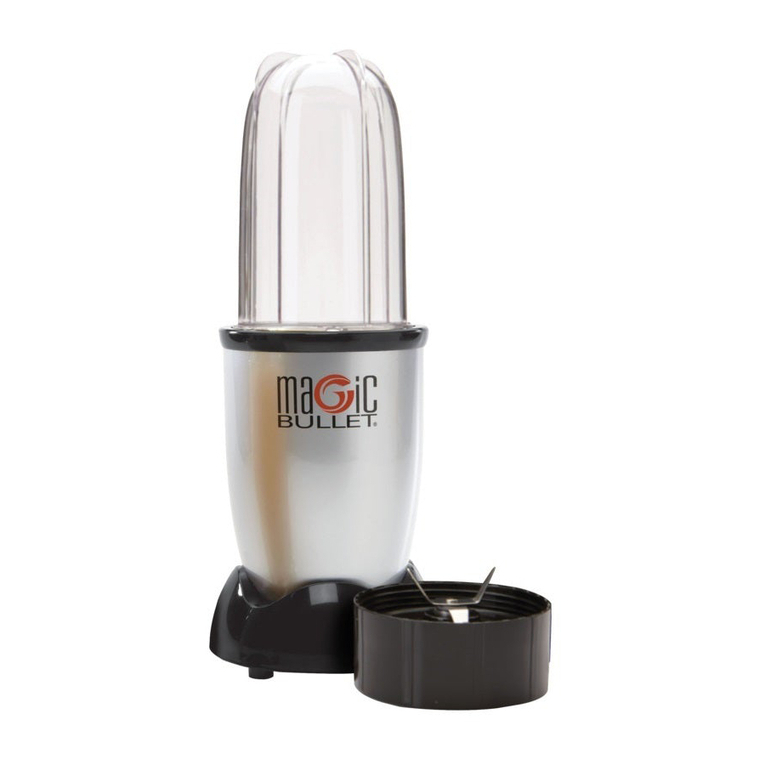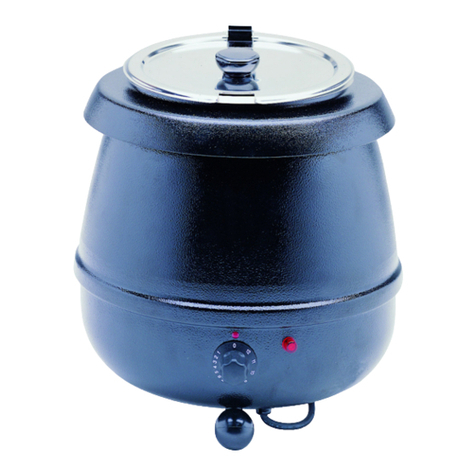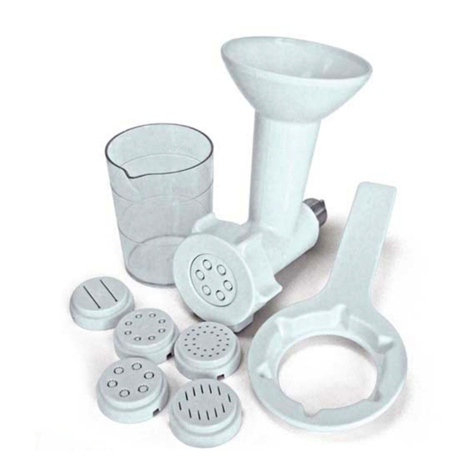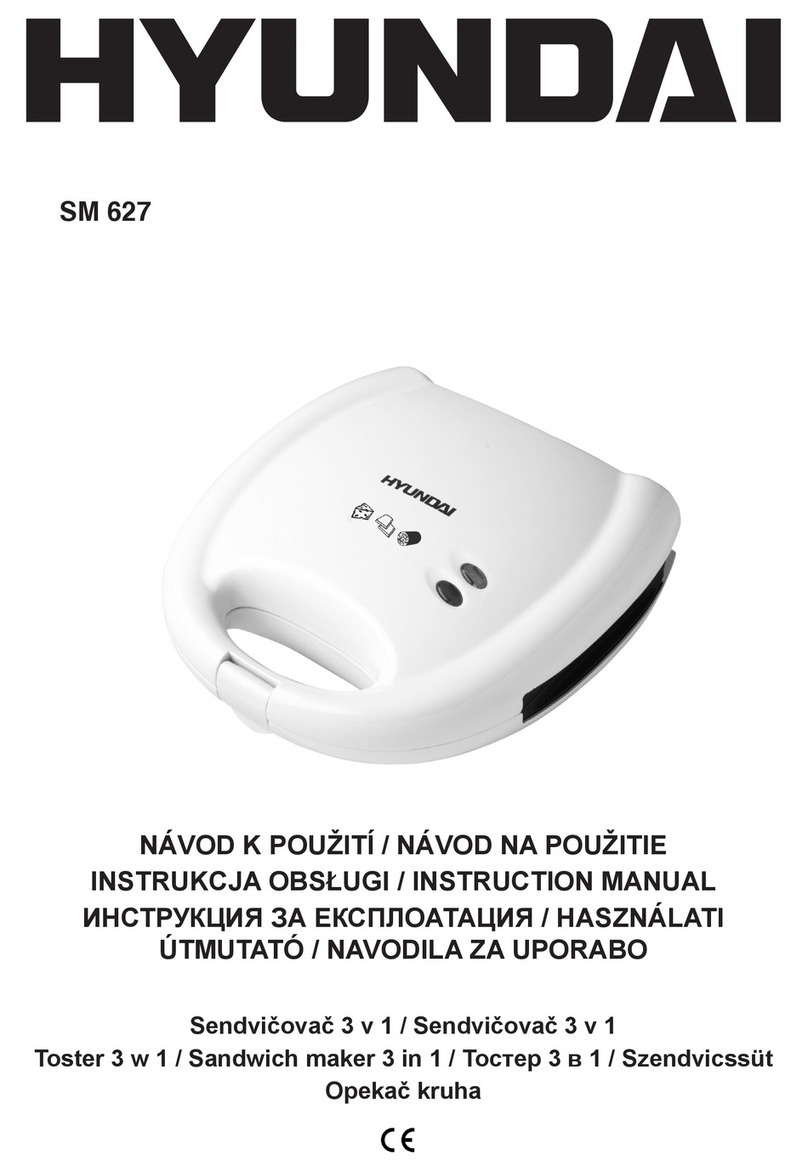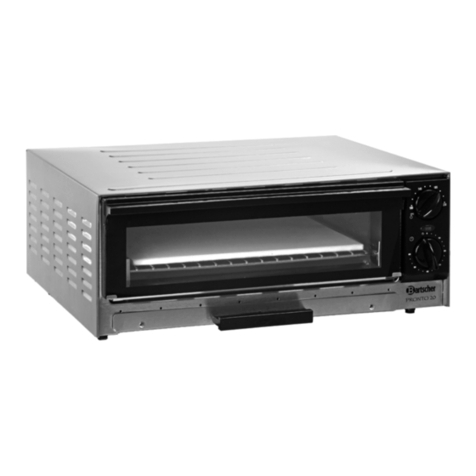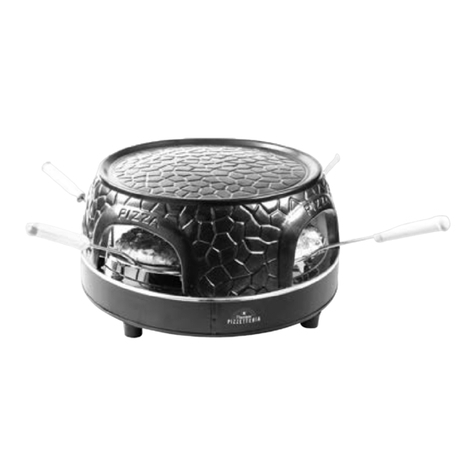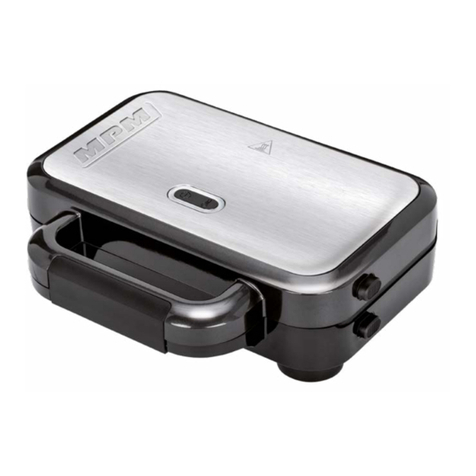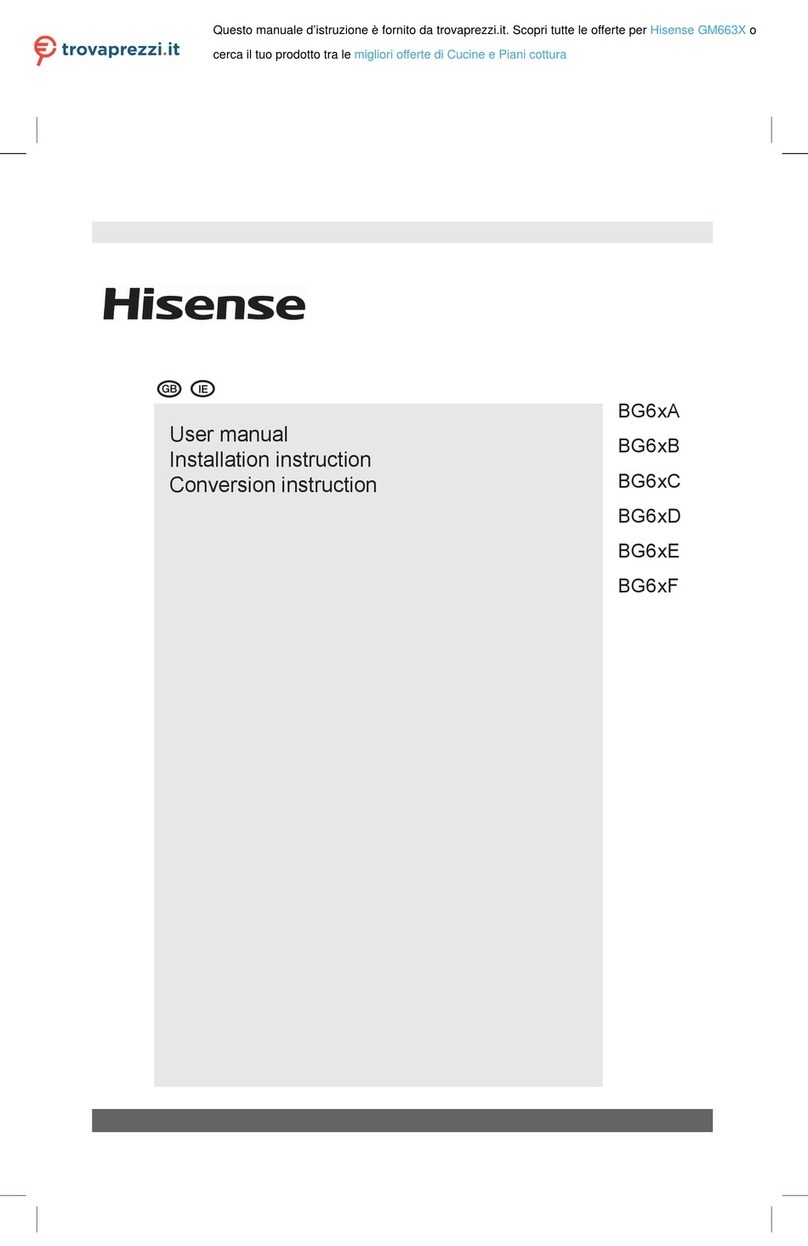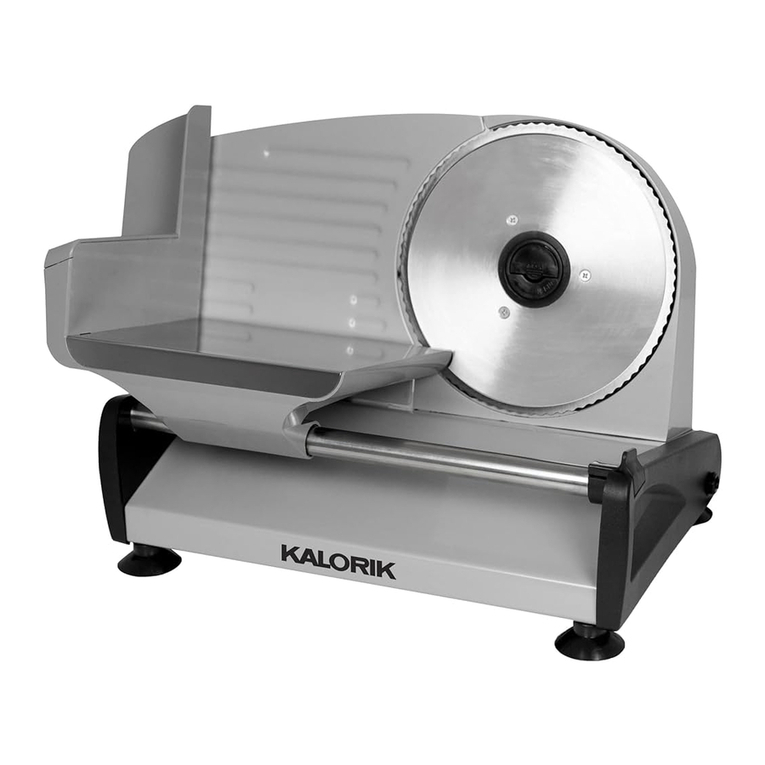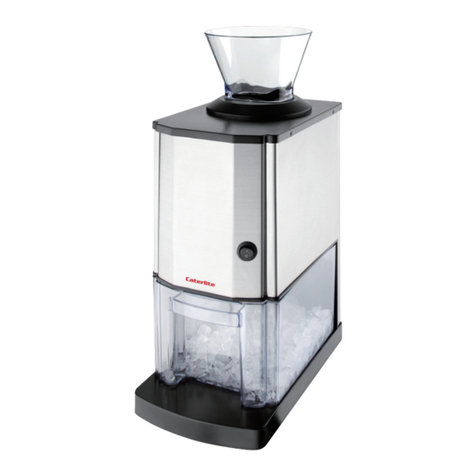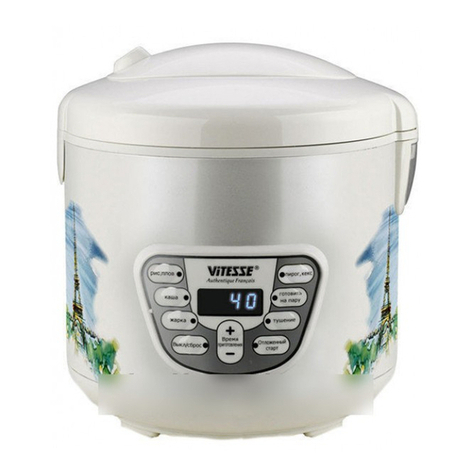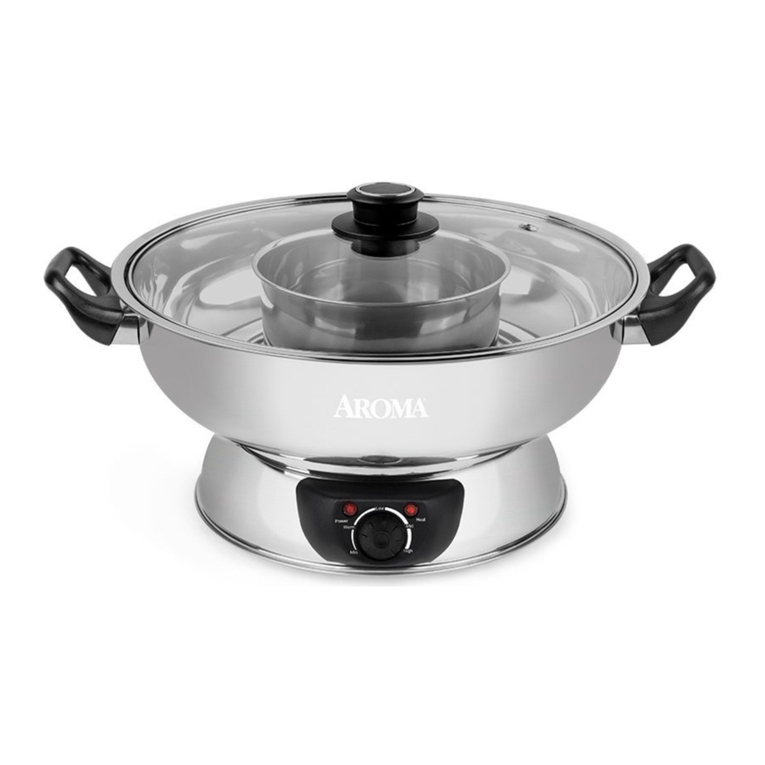Tilia FoodSaver PROFESSIONAL II User manual

©2001 by Tilia, Inc. All Rights Reserved.
This material may not be copied or reproduced in any
fashion without written permission from the publisher.
FoodSaver®is a registered trademark of Tilia, Inc.
First printing, May 2001
Printed in the United States of America
FoodSaver Patent 4,941,310
FoodSaver Bag Patent # Re. 34,929
Item# 18-0009 (5/01)
User Manual
The Original Home Vacuum Packaging System
™
PROFESSIONAL II
Hane Chow Proof
Version 6
Date 5.1.01

Welcome
THE FOODSAVER USER MANUAL
You have just purchased an appliance that will soon
have you wondering how you ever got by without
it. The FoodSaver Professional II is so convenient
and versatile, you’ll find yourself using it every day.
We guarantee that if you make room for it on your
countertop, you will quickly see how indispensable
it becomes in your kitchen.
You’ll Save Money, Time, and Effort.
◗Meats, poultry, fish, and produce stay fresh and
flavorful in your freezer.
◗No more freezer burn.
◗Foods stay fresh longer in your refrigerator.
◗Dry ingredients stay fresh in the pantry, too.
◗Buy in bulk to reduce your grocery bills.
◗Repackage your purchases in portions sized for
your family’s needs.
◗Prepare meals in advance so when you don’t have
time to cook, you and your family will still have
great-tasting homemade meals.
◗Take bags right from the freezer or refrigerator
and boil or microwave.
◗Reduce waste and spoilage.
◗Great for storing non-food items to keep them dry
and free of dust and mold.
◗Stop silver from tarnishing because the metal is
not exposed to air.
Table of Contents
THE FOODSAVER USER MANUAL
1
Welcome
2The FoodSaver Professional II
4FoodSaver Accessories
Operating Instructions: How to...
6Make a Custom-Made Bag with FoodSaver Rolls
8Vacuum Package Using Ready-Made and
Custom-Made FoodSaver Bags
10 Use the Vacuum Override Button
11 Use the Manual Seal Button
14 Vacuum Package Using FoodSaver Designer Canisters
16 Vacuum Package Using FoodSaver Bulk Storage and
Square Canisters
18 Vacuum Package Using the FoodSaver Jar Sealer with Mason Jars
20 Vacuum Package Using FoodSaver Universal Lids
22 Vacuum Package Using FoodSaver Bottle Stoppers
24 Care and Cleaning Instructions
25 Food Preparation and Storage Guide
34 Important Safeguards
35 Troubleshooting
39 Vacuum Packaging Non-Food Items
40 Warranty and Service Information

THE FOODSAVER USER MANUAL
3
About Vacuum Packaging
Air is left in most food storage
containers and plastic bags even
when they are sealed tightly.
Oxygen is one of the main reasons
that food goes bad. It starts a
chemical change – robbing food of
its nutritional value, texture, color,
flavor, and overall quality. The
FoodSaver Professional II removes
the air from our FoodSaver Bags
and then seals the bags so that air
cannot reenter. The Professional II
is also designed to be used with a
wide range of FoodSaver accessories
that will keep a variety of foods
fresh longer. Finally, you can main-
tain the same freshness at home that
you get with professionally vacuum-
packaged items you purchase at the
grocery store.
FoodSaver Bags and Rolls
◗FoodSaver Bags and Rolls are made
from a patented, 3-ply plastic
material with special channels that
remove the air. The outer layer of
nylon seals freshness in, while lock-
ing air and moisture out.
◗FoodSaver Bags and Rolls can go
straight from the freezer and
refrigerator to the microwave or
boiling water.
◗FoodSaver Bags and Rolls are
reusable, washable (including in
the dishwasher), and recyclable.
◗FoodSaver Bags are ready-made
in quart and gallon sizes to offer
convenient, one-step storage.
◗FoodSaver Rolls come in two
widths, 8 inches and 11 inches,
which allow you to make custom-
sized bags for the items that you
are vacuum packaging.
◗Most FoodSaver users like to keep
both bags and rolls handy for the
greatest packaging convenience.
Our Patented 3-Layer Design
Patented FoodSaver Bags are designed to
remove air and seal in freshness.
The FoodSaver Professional II
THE FOODSAVER USER MANUAL
2
Indicator Lights
Safety Precision
Bag Cutter
Bag Sensor
Switch
Accessory Port
Sealing Time
Adjustment Knob
Automatic
On/Off Button
Manual Seal
Button Vacuum Override
Button
Vacuum Channel
Sealing Strip
Bag Strorage
Compartment
Safety Knife Blade
Sealer
Pressure Bar

FoodSaver Accessories
THE FOODSAVER USER MANUAL
4
FoodSaver Canisters
◗There are three styles of FoodSaver
Canisters – Designer, Square, and
Bulk Storage. They are ideal for
storing delicate items and liquids,
as well as dry goods and cooking
staples. The
canisters
come in a
variety of
sizes and
all can be
used in the refrigerator
and pantry. Canisters are not to
be used in the freezer.
◗FoodSaver
Designer
Canisters are
especially
attractive for
use on your
countertop.
◗Vacuum packaging in the
FoodSaver Square Canister is an
excellent way to marinate foods
because the pro-
cess opens the
pores of the
food and seals
in the flavor. The Professional II
can marinate food in 20 minutes
so you don’t have to wait all day
or overnight for that special taste.
All FoodSaver Canisters work for
marinating, but we recommend
the Square Canister because less
marinade will be needed.
◗The Bulk Storage Canisters are
designed to store pantry items
such as cereal, chips, rice, and
baking goods.
FoodSaver Regular Jar Sealer
◗The FoodSaver
Regular Jar
Sealer allows
you to vacuum
package in regular or standard-
mouth mason jars.
Note: FoodSaver Jar Sealers are
designed to fit mason jars manu-
factured in the U.S., such as Ball®
and Kerr®brands.
THE FOODSAVER USER MANUAL
5
FoodSaver Wide-Mouth Jar Sealer
◗The FoodSaver Wide-Mouth Jar
Sealer allows you to
vacuum package
in wide-mouth
mason jars.
FoodSaver Universal Lids
◗With this great kitchen accessory,
you don’t have to transfer many
foods out of their
original containers.
Vacuum package
and extend the life of foods in their
original glass jars and metal cans.
◗Available in two sizes – 4 inches
and 51⁄2inches in diameter.
FoodSaver Bottle Stoppers
◗FoodSaver Bottle Stoppers allow
you to vacuum package bottles
to protect the taste and
extend the life of liquids
such as wine,
liquor, and
cooking oils.
Purchasing FoodSaver Bags,
Rolls, and Accessories
◗Your Professional II kit includes
FoodSaver Bags and Rolls and
may include some accessories.
Additional supplies and acces-
sories are available at your local
retailer. To find the nearest one,
visit our website at
www.foodsaver.com
or call our Consumer
Services Department
at the number listed
at the back of
this manual.

THE FOODSAVER USER MANUAL
7
6Press and release the Manual Seal
Button. The lid will be automati-
cally pulled down into the sealing
position. The red sealing light will
come on indicating the bag is
being sealed.
7While the bag is sealing, slide the
bag cutter completely across the
sliding channel to cut the bag.
Make sure you return the bag
cutter to the extreme left or right
side of the sliding channel. Note:
You may have to push down and apply extra pressure to make
sure the bag has been cut.
8At the end of the sealing process, the red sealing light will blink,
indicating the machine is re-programming itself for the next
function. The lid will open slightly returning to the ready position.
Do not lift the lid until after the red sealing light stops blink-
ing and the lid has reset to the ready position.
9Lift up the lid and remove the bag.
10 You now have a custom-sized FoodSaver Bag.
You are now ready to vaccum package. Just follow the instruc-
tions on page 8.
How to Make a Custom-Made Bag with FoodSaver Rolls
THE FOODSAVER USER MANUAL
6
When using FoodSaver Rolls you first need to make a bag, then
vacuum package your food in the bag. (If you are using ready-made
FoodSaver bags, go to page 8.)
1Place the Professional II on a flat, dry surface and plug the power
cord into a standard electrical outlet.
2Set the sealing time adjustment
to “3.”
3Open the lid and place the
FoodSaver Roll into the bag
storage compartment so that
the end of the roll comes up
from the back and can be
pulled across the top of the
roll toward the front of
the machine. Make
sure the roll is
centered so
that an
even seal
will be
achieved.
4Lay the item(s) you want to vacuum package near the Professional II
and pull the roll out to the desired length. Leave at least 3 extra
inches at one end of the bag and more if you want to reseal or
reuse the bag. (One inch per reseal.)
5Close the lid.

THE FOODSAVER USER MANUAL
9
6Press and release the On button.
The Professional II will automati-
cally vacuum and seal, then turn
itself off.
7When the vacuum and sealing pro-
cess is complete, the red sealing
light will blink indicating the
machine is re-programming itself
for the next function. The lid will
open slightly returning to the
ready position. Do not lift the lid
until after the red sealing light
stops blinking and the lid has reset to the ready position.
8Lift up the lid and remove the bag.
9Vacuum packaging is complete.
IMPORTANT: You will need to pre-freeze foods that have excess
liquid or moisture before vacuum packaging in FoodSaver Bags
because the liquid can be drawn up into the vacuum pump.
How to Vacuum Package Using Ready-Made
and Custom-Made FoodSaver Bags
THE FOODSAVER USER MANUAL
8
1If you have not already done so, place the Professional II on a flat,
dry surface and plug the power cord into a standard electrical outlet.
2Open the lid.
3Place the items to be vacuum packaged into the bag.
4Place the open end of
the bag down into the
vacuum channel.
5Close the lid.

How to Use the Manual Seal Button
THE FOODSAVER USER MANUAL
11
When to Use the Manual Seal Button
Use the Manual Seal Button when you want to seal a FoodSaver
Bag before a complete vacuum has been created. This feature is
useful when vacuum packaging fragile items such as bread, baked
goods, and berries so they don’t get crushed.
How to Use the Manual Seal Button
1If you have not already done so, place the Professional II on a
flat, dry surface and plug the power cord into a standard electri-
cal outlet.
2Open the lid.
3Place the items to be vacuum packaged into the bag.
NOTE: If using a FoodSaver Roll, you will need to create a bag first.
Refer to instructions on page 6.
How to Use the Vacuum Override Button
THE FOODSAVER USER MANUAL
10
How to Use the Vacuum Override Button
If you want to remove even more
air from a FoodSaver Bag, Designer
Canister, Square Canister, Bulk
Storage Canister, mason jar, or
other storage container, simply
press and hold the Vacuum
Override Button. It will delay the
sealing process. When you release the button, the Professional II
will return to the normal sealing cycle, then turn itself off and
reset to the ready position.

THE FOODSAVER USER MANUAL
13
6Press and release the On button.
The Professional II will automati-
cally vacuum and seal, then turn
itself off.
7To stop the process before all the
air is removed, press and release
the Manual Seal Button. The
sound will stop and the lights will
turn off when the bag is sealed.
The lid will open slightly returning
to the ready position. Do not lift
the lid until after the red sealing
light stops blinking and the lid has reset to the ready position.
8Lift up the lid and remove the bag.
9Vacuum packaging is complete.
NOTE: It takes approximately three seconds to stop the vacuum
process and seal the bag. If you are using a small bag or pack-
aging a fragile item, we recommend that you press down on the
Manual Seal Button immediately after pressing the On button.
How to Use the Manual Seal Button
THE FOODSAVER USER MANUAL
12
4Place the open end of the
bag down into the vacuum
channel.
5Close lid.

THE FOODSAVER USER MANUAL
15
6Set the sealing time adjustment to
“1” or “2.”
7Press and release the On button.
When the vacuum cycle is done
and air is removed from the canis-
ter, the red sealing light will blink
indicating the machine is re-pro-
gramming itself for the next func-
tion. The lid will open slightly
returning to the ready position.
Do not lift the lid until after the
red sealing light stops blinking
and the lid has reset to the ready position.
8Vacuum packaging is complete.
How to Open the FoodSaver Designer Canister
To open the FoodSaver Designer Canister, press and hold down
the grey rubber button in the center of the lid. This will release
the vacuum and you should be able to remove the lid.
IMPORTANT: Remember to remove the accessory hose from the
accessory port on the FoodSaver Professional II before you
vacuum package in FoodSaver Bags.
How to Vacuum Package Using FoodSaver
Designer Canisters
THE FOODSAVER USER MANUAL
14
FoodSaver Designer Canisters are both functional and attractive
and an excellent way to store delicate items in the refrigerator,
pantry, or on the countertop. FoodSaver Designer Canisters
cannot be stored in the freezer and, unlike the Bulk Storage and
Square Canisters, cannot be used in the microwave. The bases
can be put in the dishwasher for cleaning. However, do not put
the lids in the dishwasher.
1Place the Professional II on a flat, dry surface and plug the power
cord into a standard electrical outlet.
2Place the item(s) to be vacuum packaged inside the canister. Leave
at least one inch between the contents and the rim of the canister.
3Place the lid on top of the canister.
4Insert one end of the accessory
hose into the accessory port on
the Professional II.
5Insert the other end of the accessory
hose into the hole on the top of
the canister.

How to Vacuum Package Using FoodSaver
Bulk Storage and Square Canisters
THE FOODSAVER USER MANUAL
16
THE FOODSAVER USER MANUAL
17
7Set the sealing time adjustment to
“1” or “2.”
8Press and release the On button.
When the vacuum cycle is done
and air is removed from the
canister, the red sealing light will
blink indicating the machine is
re-programming itself for the next
function. The lid will open slightly
returning to the ready position.
Do not lift the lid until after the
red sealing light stops blinking
and the lid has reset to the ready position.
9Turn the knob on the canister lid so the arrow points to
“Closed.”
10 Vacuum packaging is complete.
How to Open the FoodSaver Bulk Storage or Square Canister
To open the FoodSaver Bulk Storage or Square Canister, turn the
knob on the canister lid so the arrow points to “Open.” This will
release the vacuum and you should be able to remove the lid.
NOTE: Do NOT attempt to vacuum seal any contents that are
warmer than room temperature, since the vacuum may cause
the contents to bubble out of the canister or jar.
IMPORTANT: Remember to remove the accessory hose from
the accessory port on the Professional II before you vacuum
package in FoodSaver Bags.
FoodSaver Bulk Storage and Square Canisters are a great way to
store food in your refrigerator and pantry. The Square Canister is
also ideal for marinating.
FoodSaver Canisters cannot be stored in the freezer. The Bulk
Storage and Square Canister bases can be used in the microwave
to reheat foods and put in the dishwasher for cleaning. Do not
put the lids in the microwave or dishwasher.
1Place the Professional II on a flat, dry surface and plug the power
cord into a standard electrical outlet.
2Place the item(s) to be vacuum packaged inside the canister. Leave
at least one inch between the contents and the rim of the canister.
3The canister lid is labeled “Open,”
“Vacuum,” and “Closed.” Turn the
knob on the canister lid so the arrow
points to “Vacuum.”
4Place the lid on top of the canister.
5Insert one end of the accessory
hose into the accessory port on the
Professional II.
6Insert the other end of the acces-
sory hose into the hole on the top
of the canister.

THE FOODSAVER USER MANUAL
19
How To Vacuum Package Using the FoodSaver
Jar Sealer with Mason Jars
THE FOODSAVER USER MANUAL
18
7Set the sealing time adjustment to
“1” or “2.”
8Press and release the On button.
When the vacuum cycle is done
and air is removed from the mason
jar, the red sealing light will blink
indicating the machine is re-pro-
gramming itself for the next
function. The lid will open slightly
returning to the ready position.
Do not lift the lid until after the
red sealing light stops blinking
and the lid has reset to the ready position.
9Gently pull up on the jar sealer to remove it. The metal lid should
fit tightly on the jar; you should not be able to pull it off.
10 Vacuum packaging is complete.
How to Open the Mason Jar
To open the mason jar, wedge a
spoon between the mason jar lid
and the highest part of the threaded
rim. Twist the spoon gently to
release the vacuum. When opened
this way, the mason jar lid can be
reused many times.
IMPORTANT: To avoid accidents, do not use a knife to remove
the mason jar lid. Also, do not use a bottle opener to remove the
mason jar lid as it will bend the lid and prevent its reuse. Vacuum
packaging with the Professional II is not a substitute for canning.
IMPORTANT: Remember to remove the accessory hose from the
accessory port on the Professional II before you vacuum pack-
age in FoodSaver Bags.
The Professional II used with the FoodSaver Jar Sealer allows
you to vacuum package food in mason jars. There are two sizes
of jar sealers: the FoodSaver Wide-Mouth Jar Sealer for wide-
mouth mason jars, and the FoodSaver Regular Jar Sealer for regu-
lar and standard-mouth mason jars. If you wish to store mason
jars in the freezer, make sure to use tapered and tempered
freezer-safe mason jars and leave extra space between the con-
tents and the lid to allow for the normal expansion of liquids.
1Place the Professional II on a flat, dry surface and plug the power
cord into a standard electrical outlet.
2Place the item(s) to be vacuum packaged inside the mason jar.
Leave at least one inch between the contents and the rim of the jar.
3Place the mason jar lid on the top of the mason jar. (You will not
need the screw band section of the mason jar lid. It is not used
when vacuum packaging.)
4Insert one end of the accessory
hose into the accessory port on
the Professional II.
5Insert the other end of the accessory
hose into the hole on the top of
the jar sealer.
6Place the jar sealer over the
top of the mason jar. Push
down firmly until the jar
sealer covers the entire rim
of the jar.
NOTE: Always pre-soak new metal lids. Bring water to a boil, then
turn off. Pre-soak lids 5-10 minutes.

THE FOODSAVER USER MANUAL
21
6Set the sealing time adjustment to
“1” or “2.”
7Press and release the On button.
When the vacuum cycle is done
and air is removed from the con-
tainer, the red sealing light will
blink indicating the machine is
re-programming itself for the next
function. The lid will open slightly
returning to the ready position.
Do not lift the lid until after the
red sealing light stops blinking
and the lid has reset to the ready position.
8Turn the knob on the universal lid so the arrow points to
“Closed.”
9Vacuum packaging is complete.
How to Open the FoodSaver Universal Lid
To open the FoodSaver Universal Lid, turn the knob so the arrow
points to “Open.” You should now be able to remove the univer-
sal lid from the container.
IMPORTANT: Remember to remove the accessory hose from the
accessory port on the FoodSaver Professional II before you
vacuum package in FoodSaver Bags.
How To Vacuum Package Using FoodSaver Universal Lids
THE FOODSAVER USER MANUAL
20
FoodSaver Universal Lids give you the flexibility of vacuum
packaging some foods in their original containers. They work on
most metal cans and glass jars. They’re excellent for retaining the
freshness of tomato and pasta sauces, coffee, mustards, and toppings.
However, vacuum packaged “perishable” foods still must be
refrigerated to minimize micro-organism growth. If you are plan-
ning to store canned foods for more than a day, transferring foods
from the can into a FoodSaver Bag, FoodSaver Canister, glass, or
hard plastic container is recommended to prevent “off-flavor” from
developing from the can.
1Place the Professional II on a flat, dry sur-
face and plug the power cord into a stan-
dard electrical outlet.
2The universal lid is labeled “Open,”
“Vacuum,” and “Closed.” Turn the
knob on the universal lid so the arrow
points to “Vacuum.”
3Insert one end of the accessory
hose into the accessory port on
the Professional II.
4Place the universal lid on top of
the open container.
5Insert the other end of
the accessory hose into
the hole on the top of
the universal lid.
CAUTION: FoodSaver Universal Lids are not to be used with thin
glass, crystal, plastic, or aluminum containers. The vacuum
force exerted by the Professional II is very powerful and could
implode a thin glass or a non-rigid container.

THE FOODSAVER USER MANUAL
23
How to Vacuum Package Using FoodSaver Bottle Stoppers
THE FOODSAVER USER MANUAL
22
5Set the sealing time adjustment to
“1” or “2.”
6Press and release the On button.
When the vacuum cycle is done
and air is removed from the bottle,
the red sealing light will blink indi-
cating the machine is re-program-
ming itself for the next function.
The lid will open slightly returning
to the ready position. Do not lift
the lid until after the red seal-
ing light stops blinking and the
lid has reset to the ready position.
7Remove the accessory hose from the bottle stopper.
8Vacuum packaging is complete.
How to Remove the FoodSaver Bottle Stopper
To remove the FoodSaver Bottle Stopper, simply twist and pull
up on the bottle stopper to release the vacuum.
IMPORTANT: Remember to remove the accessory hose from the
accessory port on the Professional II before you vacuum package
in FoodSaver Bags.
FoodSaver Bottle Stoppers are the best way to keep wine, oils, and
non-carbonated bottled liquids fresh longer. You will keep their
delicate taste from going stale by not exposing the liquids to air.
FoodSaver Bottle Stoppers are not to be used with plastic bottles.
Also, do not use with any carbonated or sparkling beverages.
Carbonation happens under pressure. A vacuum removes this
pressure, releasing the bubbles and causing the beverages to
become flat.
1Place the Professional II on a flat, dry surface and plug the power
cord into a standard electrical outlet.
2Insert the bottle stopper into the neck of the bottle. Leave at
least one inch between the contents and the bottom of the
bottle stopper.
3Insert one end of the accessory
hose into the accessory port
on the Professional II.
4Insert the other end of the
accessory hose into the hole
on the top of the bottle stopper.

Food Preparation and Storage Guide
THE FOODSAVER USER MANUAL
25
Care and Cleaning Instructions
THE FOODSAVER USER MANUAL
24
The FoodSaver Professional II
1Always unplug the Professional II before cleaning.
2Do not immerse the Professional II in water.
3Do not use abrasive products or materials to clean any of the
Professional II components. Such cleaners can scratch the surfaces
and damage the black foam rubber pads, preventing a vacuum
from forming.
4Clean using a mild dishwashing soap and a warm, damp cloth.
Wipe away any food residue from inside or around the vacuum
channel, sealing strip, and black foam rubber pads.
5Dry thoroughly before using.
FoodSaver Bags
1Wash bags in warm water using a mild dishwashing soap.
2Bags can be washed in the dishwasher by carefully turning the
bags inside out and spreading them over the top rack of the dish-
washer, so that all surfaces are exposed to the washing water.
3Allow bags to dry thoroughly before reusing.
FoodSaver Accessories
1All FoodSaver accessories should be washed in warm water using
a mild dishwashing soap.
2Dry thoroughly before using.
3All FoodSaver Canister bases (but not the lids) may be washed in
the dishwasher.
4Square and Bulk Storage Canister bases (but not the lids) may be
used to reheat foods in the microwave.
5Designer Canister bases and lids are not to be used in the
microwave.
IMPORTANT: We do not recommend reusing bags that have been
used to store raw meats or fish. Also, bags may not be reusable
if they have been used to store greasy or fatty foods.
NOTE: Vacuum packaging is NOT a substitute for refrigeration or freezing.
Any “perishable” foods that require refrigeration prior to vacuum packaging
still must be refrigerated or frozen after vacuum packaging.
Guidelines for Vacuum
Packaging Food
Vacuum packaging is not a substitute
for canning nor can it reverse deteri-
orating quality; it can only slow down
changes in quality. It is impossible to
predict how long a specific food will
have top-quality flavor, appearance,
and texture, because it depends on
the age and condition of the food
on the day it was vacuum packaged.
Foods that are extremely fresh will
last longer than foods that are al-
ready deteriorating.
Vacuum packaging extends the life of
foods by removing nearly all the air in
a sealed container, thereby reducing
oxidation which affects nutritional
value, flavor, and overall quality.
However, most foods contain enough
water to support micro-organisms
which can grow with or without air.
While micro-organisms are present
everywhere, only certain ones cause
problems, and only under certain
conditions:
◗Mold: Easy to identify because of
its characteristic fuzz. Molds are
virtually eliminated by vacuum
packaging because they cannot
grow in a low oxygen environment.
◗Yeast: Results in fermentation,
which can frequently be identified
by smell or taste. Yeast requires
water, sugar, and a moderate tem-
perature to grow, and can grow
with or without air. Refrigeration
slows the growth of yeast, and
freezing stops it completely.
◗Bacteria: Frequently results in
discoloration, soft or slimy texture,
and/or an unpleasant odor. Clostrid-
ium botulinum (the organism that
causes Botulism) can grow without
air under the right conditions,
cannot be detected by smell or
taste, and although extremely rare,
can be very dangerous.
Maintaining low temperatures is a
critical factor in preserving foods
safely. Growth of micro-organisms is
significantly reduced at temperatures
of 40°F (4°C) or below. Freezing at
0°F (-17°C) does not kill micro-
organisms, but it stops them from
growing. For long term storage, always
freeze “perishable” foods that have
been vacuum packaged.
Thawing and Heating Vacuum
Packaged Foods
Always thaw foods in either the
refrigerator or microwave – do not
leave “perishable” foods at room
temperature to thaw.
To microwave in a FoodSaver Bag,
cut a corner of the bag and place on
a microwave-safe dish. You can also
place the FoodSaver Bag in boiling
water to heat.

THE FOODSAVER USER MANUAL
27
Where to Recommended Vacuum Normal Storage
MEATS/FISH Store FoodSaver Packaged Life
(without
Container Storage Life
vacuum packaging)
Beef, Lamb, and Pork Freezer FoodSaver Bag 2 to 3 years 6 months
Ground meat Freezer FoodSaver Bag 1 year 4 months
Poultry Freezer FoodSaver Bag 2 to 3 years 6 months
Fish Freezer FoodSaver Bag 2 years 6 months
Food Preparation and Storage Guide
THE FOODSAVER USER MANUAL
26
Where to Recommended Vacuum Normal Storage
CHEESES Store FoodSaver Packaged Life
(without
Container Storage Life
vacuum packaging)
Cheddar, Swiss, Parmesan Refrigerator FoodSaver Bag 4 to 8 months 1 to 2 weeks
Preparation Guidelines for Meats/Fish:
Option 1: For best results pre-freeze
meats and fish for 1-2 hours before
vacuum packaging in a FoodSaver
Bag to ensure the retention of juices
and shape, and to help guarantee a
good seal.
Option 2: If it is not possible to pre-
freeze, place a folded paper towel
between the meat/fish and the end
of the bag. Leave the paper towel in
the bag when vacuum packaging to
absorb excess moisture and juices.
Preparation Guidelines for Hard Cheeses:
Keep cheese fresh even if you use
it everyday by vacuum packaging it
with the Professional II after each
use. Make your original FoodSaver
Bag extra long. Simply cut along
the sealed edge, remove the cheese
and slice off the amount needed,
then place the cheese back in the
bag and repackage. Allow approxi-
mately one inch of bag material for
each time the bag will be opened
and repackaged.
Preserve Your Garden Goodness
Your FoodSaver Professional II is
an invaluable tool to help preserve
the quality, freshness, and nutrients
of your homegrown vegetables.
When vacuum packaging and freez-
ing items from your garden, you
can enjoy your harvest year round.
General Harvesting Information
◗It is usually best to pick in the cool
of the morning because produce
has the best texture then.
◗Harvesting from a home garden
gives you the opportunity to enjoy
produce that is ripened to perfec-
tion. Because different parts of the
plant will ripen at different times,
the Professional II allows you to
vacuum package small amounts
frequently and cost effectively.
◗Select top-quality young, tender
produce that is free from mold
and decay. Freezing will not
improve the quality.
◗Do not select vegetables that have
frozen in the garden to use in any
preservation method. However,
these frozen-on-the-plant vegetables
may be acceptable for immediate
fresh eating if they are harvested
before any decay starts.
◗Clean vegetables thoroughly before
freezing and vacuum packaging.
Where to Recommended Vacuum Normal Storage
LEAFY VEGETABLES Store FoodSaver Packaged Life
(without
Container Storage Life
vacuum packaging)
Lettuce, Spinach Refrigerator Canister 2 weeks 3 to 6 days
Preparation Guidelines for Leafy Vegetables:
Wash vegetables, towel or spin dry,
and vacuum package. You can then
open the canister and take what you
need each time you make a salad.

Food Preparation and Storage Guide
THE FOODSAVER USER MANUAL
29
Blanching Where to Recommended Vacuum
Normal Storage
VEGETABLES Times Store FoodSaver Packaged Life
(without
Container Storage Life
vacuum packaging)
Asparagus 11⁄2to 3 mins. Freezer FoodSaver Bag 2 to 3 years 8 months
Whole kernel corn
4 to 5 mins. Freezer FoodSaver Bag 2 to 3 years 8 months
Corn on cob 6 to 11 mins. Freezer FoodSaver Bag 2 to 3 years 8 months
Snow peas, 11⁄2to 2 mins. Freezer FoodSaver Bag 2 to 3 years 8 months
Sugar snap peas
Green beans 3 mins. Freezer FoodSaver Bag 2 to 3 years 8 months
Broccoli, 3 to 4 mins. Freezer FoodSaver Bag 2 to 3 years 8 months
Cauliflower
Brussels sprouts, 3 to 5 mins. Freezer FoodSaver Bag 2 to 3 years 8 months
Cabbage
THE FOODSAVER USER MANUAL
28
Preparation Guidelines for Vegetables:
◗Vegetables should be blanched
before vacuum packaging. This
stops the enzyme action, which
will eventually cause loss of flavor,
color, and texture.
◗Blanch vegetables by placing them
in boiling water or in the micro-
wave until they are cooked but
still crisp. Immerse in cold water
to stop the cooking process. Dry
vegetables on a towel, then freeze.
◗To freeze vegetables in individual
servings, place them on baking
sheets and spread out so that pieces
are not touching. This way they
will not freeze together in a block.
◗Place baking sheet in the freezer
for 1-2 hours until the pieces are
solidly frozen.
◗Vacuum package in a FoodSaver
Bag and return to the freezer for
long-term storage. Remember, you
can microwave and boil FoodSaver
Bags right from the freezer.
◗Strong-smelling vegetables emit
gases during storage. Therefore, they
must be stored in the freezer only.
Where to Recommended Vacuum Normal Storage
FRUITS Store FoodSaver Packaged Life
(without
Container Storage Life
vacuum packaging)
Apricots, Nectarines,
Peaches, Plums, Freezer FoodSaver Bag 1 to 3 years 6 to 12 months
All types of berries
All types of berries Refrigerator Canister 1 to 2 weeks* 1 to 6 days
*NOTE: Blueberries and cranberries will usually last about two weeks and softer
berries such as boysenberries, blackberries, raspberries, and strawberries can
be stored for approximately one week.
Preparation Guidelines for Fruits:
For best results, before vacuum
packaging soft fruits or berries in a
FoodSaver Bag, pre-freeze for 1-2
hours or until solidly frozen. To
freeze fruits in individual servings,
place sliced fruit or berries on a
baking sheet and spread out so the
pieces are not touching. This way
they will not freeze together in a
block. Then vacuum package in
portions for baking, or in your
favorite combinations for easy fruit
salad all year round.
Keep berries fresh longer in the
refrigerator by repackaging them in
a FoodSaver Canister. You can open
the canister and take what you need
for snacks or fruit salad, then reseal
to maintain freshness.

THE FOODSAVER USER MANUAL
31
Food Preparation and Storage Guide
THE FOODSAVER USER MANUAL
30
Where to Recommended Vacuum Normal Storage
BAKED GOODS Store FoodSaver Packaged Life
(without
Container Storage Life
vacuum packaging)
Bread/rolls, Freezer FoodSaver Bag 1 to 3 years 6 to 12 months
Bagels/pastries
Where to Recommended Vacuum Normal Storage
NUTS Store FoodSaver Packaged Life
(without
Container Storage Life
vacuum packaging)
Walnuts, Pistachios,
Almonds, Peanuts, Pantry FoodSaver Bag, 2 years 6 months
Sunflower seeds Canister
Preparation Guidelines for Baked Goods:
Before vacuum packaging soft or airy
baked goods, pre-freeze for 1-2 hours
or until solidly frozen so that they
will hold their shape. You can bake a
double batch of bread or multiple pie
shells and vacuum package the extras
for later use. Also, you can vacuum
package treats such as peanut brittle
and fudge to send as gifts.
Preparation Guidelines for Nuts:
Vacuum packaging eliminates the
stale or rancid flavor nuts often get
when stored. Plus, it eliminates the
growth of molds that commonly
occur with nuts. Keep nuts fresh by
vacuum packaging them with the
Professional II. You can open the
container and take what you need
for baking or snacks and then
vacuum package again. If using a
FoodSaver Bag, allow approxi-
mately one inch of extra bag mate-
rial for each time the bag will be
opened and repackaged.
Where to Recommended Vacuum Normal Storage
PREPARED LIQUIDS Store FoodSaver Packaged Life
(without
Container Storage Life
vacuum packaging)
Soups, Stews,
Sauces, Other liquids Freezer FoodSaver Bag 1 to 2 years 3 to 6 months
Where to Recommended Vacuum Normal Storage
COFFEE Store FoodSaver Packaged Life
(without
Container Storage Life
vacuum packaging)
Beans Freezer FoodSaver Bag 2 to 3 years 6 to 9 months
Ground Freezer FoodSaver Bag 2 years 6 months
Beans Pantry FoodSaver Bag, 1 year 3 months
Canister
Ground Pantry Canister 5 to 6 months 1 month
Preparation Guidelines for Coffee:
When vacuum packaging ground
coffee in a FoodSaver Bag, leave
coffee in the original bag or place
into a regular plastic bag and then
place that bag into a FoodSaver Bag
for vacuum packaging. This will
prevent grounds from being drawn
into the vacuum pump and help
guarantee a good seal.
Preparation Guidelines for Prepared Liquids:
To vacuum package liquids for freezer
storage, pre-freeze them first in a cas-
serole or loaf pan until they are solid.
Remove from the pan and vacuum
package in a FoodSaver Bag. These
“frozen bricks” stack conveniently in
your freezer and can go right into
boiling water or the microwave when
you are ready to use them. This same
technique can be used for pre-cooked
dinners and leftovers.

THE FOODSAVER USER MANUAL
33
Where to Recommended Vacuum Normal Storage
BOTTLED LIQUIDS Store FoodSaver Packaged Life
(without
Container Storage Life
vacuum packaging)
Oils (with no preservatives
such as safflower, canola, Pantry Bottle Stopper 1 to 11⁄2years 5 to 6 months
corn oil)
Wine Refrigerator Bottle Stopper 2 to 4 months 1 to 3 weeks
Where to Recommended Vacuum Normal Storage
DRY FOODS Store FoodSaver Packaged Life
(without
Container Storage Life
vacuum packaging)
Rice/risotto, Pasta, FoodSaver Bag,
Beans, Grains Pantry Canister 1 to 2 years 6 months
Food Preparation and Storage Guide
THE FOODSAVER USER MANUAL
32
Preparation Guidelines for Bottled Liquids:
Leave at least one inch of room
between the contents and the
bottom of the bottle stopper before
vacuum packaging bottled liquids.
Preparation Guidelines for Dry Foods:
Before vacuum packaging dry foods
with sharp edges in a FoodSaver
Bag, such as rice and pasta, wrap the
food in cushioning material, like a
paper towel. This will help protect
the FoodSaver Bag from punctures.
Where to Recommended Vacuum Normal Storage
SNACK FOODS Store FoodSaver Packaged Life
(without
Container Storage Life
vacuum packaging)
Crackers, Chips, Cookies Pantry Canister 3 to 6 weeks 1 to 2 weeks
Where to Recommended Vacuum Normal Storage
POWDERY FOODS Store FoodSaver Packaged Life
(without
Container Storage Life
vacuum packaging)
Flour/sugar, Dry milk,
Brown sugar, Pantry FoodSaver Bag, 1 to 2 years 6 months
Dried coconut Canister
Preparation Guidelines for Powdery Foods:
For best results when vacuum pack-
aging powdery foods in a FoodSaver
Bag, leave the item in its original
bag, then place that bag inside a
FoodSaver Bag. This keeps fine or
powdery food from being drawn
into the vacuum pump and helps to
guarantee a good seal.
Keep powdery foods fresh and pro-
tect them from insect infestation
by repackaging them with the
Professional II after each use. You can
open the container and take what
you need for baking or cooking.
Preparation Guidelines for Snack Foods:
Keep snack foods fresh even if you
use them everyday by vacuum pack-
aging them with the Professional II.
Open the canister, take what you
need, then repackage it to maintain
freshness.
NOTE: Placing a box inside a FoodSaver Bag may puncture the bag. Therefore, it
is best to use the inner bag in which most powdery foods are generally packaged.

Important Safeguards
THE FOODSAVER USER MANUAL
34
Troubleshooting
THE FOODSAVER USER MANUAL
35
For Your Own Safety, Always Follow These Basic Safety
Precautions When Using the FoodSaver Professional II:
1Read the instructions carefully.
2Do not use the Professional II on wet or hot surfaces, or near a
heat source.
3Do not immerse any part of the Professional II, power cord, or
plug into water or other liquid.
4To disconnect, unplug the power cord from the electrical outlet.
Do not disconnect by pulling on the cord.
5Do not operate the Professional II with a damaged power cord or
plug. Do not operate the Professional II if it malfunctions or is in
any way damaged. If the cord or the machine is damaged, it must
be returned to an authorized service center.
6Do not use an extension cord with the Professional II.
7Use only accessories or attachments recommended by Tilia, Inc.
8Use the Professional II only for its intended use.
9Closely supervise children when using any electrical appliance.
Do not allow the Professional II to be used as a toy.
10 120v Machines Only: The Professional II has a polarized plug
(one blade is wider than the other). To reduce the risk of elec-
trical shock, this plug is intended to fit in a polarized outlet only
one way. If the plug does not fit fully in the outlet, reverse the
plug. If it still does not fit, contact a qualified electrician. Do
not modify the plug in any way.
Nothing Happens When the On Button Is Pressed:
1Make sure the power cord is firmly plugged into the electrical outlet.
2Make sure the power cord is not damaged in any way.
3Make sure the electrical outlet is operative by plugging in
another appliance.
4Wait 20 minutes to allow the Professional II to cool off, and then
try using it again. The Professional II will shut off automatically if
it becomes too hot. To keep the machine from becoming too hot:
a. Wait at least 20 seconds for the machine to cool down after
vacuum packaging and/or sealing before attempting to vacuum
and/or seal another bag.
b. Keep the lid open before vacuuming and/or sealing another bag.
Air Is Not Removed From the Bag:
1Make sure the open end of the bag is resting entirely inside the
vacuum channel. Make sure you are not putting the edge of the
bag beyond the vacuum channel.
2Check the bag for leaks. Seal the bag with some air in it. Submerge
it in water and apply pressure. Bubbles indicate a leak. If the bag
has a leak, you need to use a new bag.
3If using a custom-sized FoodSaver Bag, check the seal of the bag.
There may be a wrinkle in the bag along the seal, which causes
leakage and prevents air from being removed. Cut the bag and
reseal the edge.
4Do not attempt to make your own side seams for a FoodSaver
Bag. They are manufactured with special side seams, which are
sealed all the way to the outer edge. Making your own side seams
may leave air pockets, which will cause leakage and prevent air
from being completely removed.

THE FOODSAVER USER MANUAL
37
Troubleshooting
THE FOODSAVER USER MANUAL
36
The Bag Will Not Seal:
1Wait 20 minutes to allow the Professional II to cool off, then
try using it again. The Professional II will shut off automatically
if it becomes too hot. To help prevent the machine from becom-
ing too hot:
a. Wait at least 20 seconds for the machine to cool down after
vacuum packaging and/or sealing before attempting to vacuum
and/or seal another bag.
b. Keep the lid open before vacuuming and/or sealing another bag.
The Mason Jar or FoodSaver Canister Will Not Vacuum:
1Make sure the jar sealer is centered and pressed firmly over the lid
on the mason jar.
2Make sure the rubber gasket on the canister or the mason jar lid
is free from food materials, crumbs, etc.
3Make sure the rim of the canister or mason jar does not have any
cracks or scratches. Any gaps can prevent a vacuum from forming.
4Make sure you aren’t filling the canister or mason jar too full
prior to vacuum packaging. Always leave at least one inch (1")
between the contents and the lid.
5Make sure the metal lid of the mason jar is not bent.
Air Was Removed From the Bag, But Has Come Back
Into the Bag:
1Check the seal of the bag. There may be a wrinkle in the bag along
the seal, which caused leakage and allowed air to come back into
the bag. Cut the bag open, and vacuum package it again.
2Moisture or food material (i.e. juices, grease, crumbs, powders, etc.)
along the seal may have caused leakage and allowed air to come
back into the bag. Cut the bag open, wipe the top inside of the bag
material to clear away any moisture or food residue, then vacuum
package the bag again. See the “Food Preparation and Storage
Guide” in this User Manual for guidelines for specific foods.
3Food items with sharp edges may have punctured the bag. If you
find a puncture hole, you will need to use a new FoodSaver Bag.
Make sure to protect the bag from puncture holes by wrapping
the items in cushioning material such as a paper towel.
4If you find none of these conditions identified in 1-3 (above), and the
bag appears to have air inside, fermentation or the release of natural
gases from inside the foods may have occurred. This could indicate
that the food may have begun to spoil and should be discarded.
The Bag Melts:
1The sealing strip may have become too hot. Always wait at least
20 seconds for the Professional II to cool down before vacuuming
and/or sealing another bag.
Table of contents
Other Tilia Kitchen Appliance manuals
